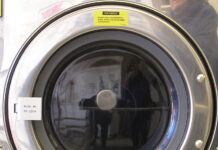
If you’re looking to upgrade your brakes and unsure of which route to take – OEM or aftermarket – you’re in the right place. Making an informed decision can be difficult, but this article will arm you with the knowledge necessary to decide what’s best for your car. You’ll be driving confidently in no time.
Introduction
When it comes to replacing your braking system, you have two options – aftermarket and OEM brakes. Aftermarket brakes are manufactured by third-party companies and are often cheaper than OEM brakes, which are produced by the original manufacturer. The decision between aftermarket and OEM brakes depends on several factors, including your budget, driving style, and vehicle model.
Aftermarket brakes are cost-effective and offer a wider range of customization options, but their quality may vary. OEM brakes, on the other hand, are more reliable and ensure a perfect fit, but they can be expensive. Therefore, before making a decision, consider factors like driving style, vehicle model, and budget to determine the best option for you.
Overview of Aftermarket Brakes
Aftermarket brakes are an alternative option to OEM (Original Equipment Manufacturer) brakes provided by vehicle manufacturers. They offer several advantages over OEM brakes, including better performance, cost-effectiveness, and availability.
Aftermarket brake manufacturers use high-quality materials and advanced technologies to produce brake components that perform at the same, if not higher, levels as OEM brakes. Moreover, aftermarket brakes offer more options in terms of design, size, and functionality, which makes them suitable for different driving needs.
In addition, aftermarket brakes are often more cost-effective than OEM brakes since they are produced by specialized manufacturers that can offer better prices. They are also widely available and can be easily found in automotive stores, making them convenient for those who prefer to do their own repairs and maintenance.
While there are some cons to aftermarket brakes (such as uncertainty about their quality and fitment with your specific vehicle), they are generally a good option to consider when looking for brake replacements that offer better performance and value. So, whichever is economically viable can be a good option, just ensure that the brake is suitable for your vehicle before making the purchase.
Overview of OEM Brakes
When it comes to deciding between aftermarket brakes and OEM brakes, it’s essential to understand what Original Equipment Manufacturer (OEM) brakes are and their benefits.
OEM brakes are brakes that meet the manufacturer’s standards and specifications for a particular vehicle model. They’re designed to ensure optimal performance, reliability, and safety on the road. Unlike aftermarket brakes, which may have different materials and construction, OEM brakes are made from high-quality materials, ensuring a perfect fit and function. They’re also backed by the manufacturer’s warranty, giving you peace of mind in the event of a defect or malfunction.
Although aftermarket brakes may be less expensive than OEM brakes, they’re not always guaranteed to meet the same standards or provide the same level of performance or reliability. Therefore, to ensure the optimum function and safety of your vehicle, it’s recommended to choose OEM brakes over aftermarket brakes.
Advantages of Aftermarket Brakes
Aftermarket brakes offer several advantages over OEM brakes that make them a viable option for drivers looking for high-performance braking systems.
| Advantage | Description |
|---|---|
| Cost-effective | Aftermarket brakes are typically more affordable than OEM brakes, making them a cost-effective option for drivers on a budget. |
| Improved performance | Aftermarket brake manufacturers often incorporate new and innovative technologies into their products to improve braking performance, resulting in better stopping power, shorter stopping distances, and less brake fade. |
| Wide range of options | Aftermarket brakes are available in a wide range of options, including different materials, sizes, and designs, giving drivers more flexibility and choice when it comes to selecting a braking system that meets their specific needs. |
| Quality and durability | Many aftermarket brake manufacturers produce high-quality and durable products that are designed to last longer and withstand the rigors of high-performance driving. |
Ultimately, whether you choose aftermarket or OEM brakes will depend on your driving needs and budget.
Disadvantages of Aftermarket Brakes
Aftermarket brakes are a popular choice among car enthusiasts and those looking to save some money. However, there are several disadvantages to installing aftermarket brakes on your vehicle, making OEM brakes the better option.
Pro tip: Don’t skimp on your brakes – they play a crucial role in your vehicle’s safety. Invest in high-quality OEM brakes to ensure optimal performance and peace of mind.
Advantages of OEM Brakes
When it comes to replacing brake components, choosing OEM brakes over aftermarket brakes offers several advantages.
Firstly, OEM brakes are typically manufactured by the same company that made the original brake component for your vehicle. This means that OEM brakes are designed to meet the exact specifications and standards set by the manufacturer, ensuring compatibility and optimal performance.
Additionally, OEM brakes often come with a warranty, giving you peace of mind and protection against any manufacturing defects or issues.
Finally, using OEM brakes can help extend the life of your vehicle’s braking system since they are specifically designed to work with your car’s unique make and model.
Pro tip: While OEM brakes may be more expensive upfront, the long-term benefits make them the best option for safe and reliable braking performance.
Disadvantages of OEM Brakes
OEM brakes, while often considered the default option for many vehicle owners, have several disadvantages compared to aftermarket brakes. These include limited options and high cost.
- Limited options: OEM brakes are designed to fit a specific vehicle make and model, which means that there is limited room for customization in terms of performance and style.
- High cost: OEM brakes can be significantly more expensive than aftermarket options, often without providing a significant increase in performance or reliability.
Choosing aftermarket brakes can offer several advantages, including greater customization options, easier installation, and cost-effectiveness. When making a decision regarding brakes, vehicle owners should weigh the pros and cons of each option carefully based on their budget, driving needs, and personal preferences.
Pro tip: Look for reputable aftermarket brake manufacturers who offer a warranty on their products to ensure quality and reliability.
Conclusion
Aftermarket or OEM brakes, which one is better? The answer is, it depends on your needs and preferences.
Aftermarket brakes come in a wide range of materials, sizes, and designs, and they are often cheaper than OEM ones. They offer better braking performance for towing and durability especially if you choose a high-quality brand. However, they may not match the exact specifications of your vehicle, and they may cause compatibility issues or void your warranty.
OEM brakes, on the other hand, are designed and manufactured by the same company that made your car. They are tested extensively to ensure reliability and safety, and they are covered by a warranty. However, they may be more expensive than aftermarket brakes, and they may not offer the same level of performance or customization options.
Ultimately, the best option for you depends on your driving style, vehicle type, and budget. Consult a professional mechanic or brake specialist to help you make an informed decision.
Pro tip: Don’t compromise on safety or quality when it comes to your brakes. Always choose a reputable brand and follow the manufacturer’s recommendations for installation and maintenance.


